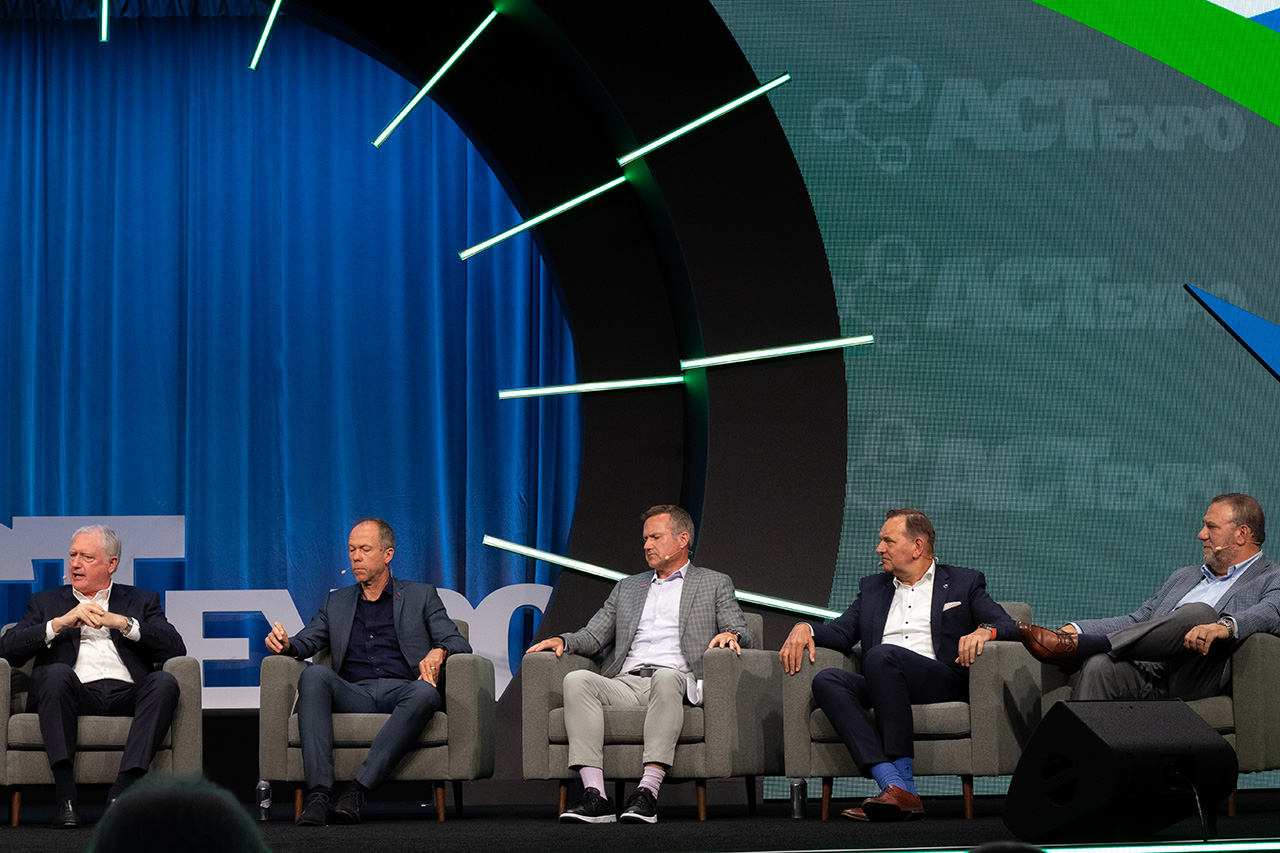Infra
CEOs Highlight Need for Infrastructure Advancements to Increase EV Deployments

LAS VEGAS — Selling electric vehicles isn’t good enough. Instead, OEM executives say they are focused on transitioning to electric as a solution and helping customers navigate their infrastructure challenges.
Despite the ACT Expo panel on Tuesday being geared toward the trucking industry, school bus customers can also learn from the various challenges and solutions of electric vehicle adoption. Among the panelists was John O’Leary, president and CEO of Daimler Trucks North America, the parent company of Thomas Built Buses. O’Leary said as the trucking industry looks ahead over the next year, school buses illustrate the promise of battery electric vehicles.
He noted that the school bus industry is on an upward slope of adoption, compared to the trucking industry which has flatlined. He predicted that 10 percent of all Type C school buses will be battery-electric within the next year. It’s an example, he said, of a great application and a great product that could result in great adoption.
O’Leary said there’s been positive surprises over the past five years of electrification. He noted that collaboration between companies brought closer the end goal of technology development. The negative and continued challenges, however, are infrastructure and other limiting factors that are outside of OEM control.
Mathias Carlbaum, president and CEO of IC Bus parent company Navistar, said in 2018 it was easy to assign targets to electrification with the mentality of, “We’ll figure out a way [to achieve it.]” However, he said, Navistar has invested into deployment more than ever before.
Carlbaum added it comes down to the feasibility of fleets adopting battery electric vehicles in order to truly move the needle. For the group of fleets that are hesitant about adopting EVs, he advised looking at where the transition can start, even if it’s one or two vehicles. Where does this make sense? This, he said, are where the conversations are happening today.
Jason Skoog, general manager of Peterbilt, agreed. He noted if companies or fleets are not trying what’s available today, they’re going to be behind the curve. At least try one EV, he advised, noting that it will help set the stage for how infrastructure is developed and the process.
Jonathan Randall, president of Mack Trucks, said for OEMs it’s no longer solely about selling a product. Instead, they are focusing on everything from route assistance to infrastructure set up. He said everyone on the panel can work with their customer bases to determine where the EV technology can best be adopted.
O’Leary also discussed Daimler’s new Greenlane Infrastructure, a joint venture with NexEra Energy Resources and BlackRock. Its goal is to develop a network of public charging stations for commercial vehicles in the U.S.
“We didn’t want to sit on the sidelines,” he said, adding that Daimler is working to raise awareness on the infrastructure challenges while also putting more pressure to get charging stations it developed.
When left to its own devices, he said, infrastructure development is not happening fast enough. He advised not putting the work on the customers, as they’re not in the business of building charging depots.
Carlbaum added that an objective voice together will move the needle for EV adoption. He advised not tackling a whole challenge at once but instead starting by finding the heavily driven roads and main routes and installing public chargers there.
Related: Study Shows Increasing Complexity of Adding Electric, Alternative Fuels
Related: (STN Podcast E159) ACT Expo Recap: Diesel’s Longevity, New Electric School Buses + Alt. Transportation Convo
Related: (STN Podcast E211) Future-Facing: State of School Bus Sustainability, Electric Buses Travel Michigan’s Dirt Roads
Related: Preparing for Electric School Bus Infrastructure
Related: Newsflash: School Buses Are Essential
Peter Voorhoeve, president of Volvo Trucks North America, which acquired the Proterra battery business earlier this year, noted that the first step to EV adoption is ensuring customers have enough power.
Carlbaum noted that making the total cost of ownership of EV reach parity to diesel doesn’t need to happen early or fast. Instead, he said the transition should be feasible to overcome the challenges. He noted that five years ago partnerships within the industry to meet the needs of new technology would be unheard of it. Today, such collaboration is natural and needed. Joining efforts with other companies, he noted, will make the transition faster.
For instance, Daimler and Proterra announced on Tuesday plans to power Thomas Built Buses’ next-generation, all-electric Saf-T-Liner C2 Jouley school bus, continuing a partnership that began in 2018. Earlier this year, Thomas announced 1,000 Jouley electric school buses had been delivered to school districts.
Meanwhile, the OEMs agreed that diesel is going to continue to be around for over the medium term. Skoog added that diesel is not dead, and Peterbilt as well as parent company Paccar continue their investments in the technology. O’Leary agreed, adding that the diesel business is paying for technology advancements, and they plan on reinvesting in the future. Carlbaum said Navistar is not solely focused on an electric agenda but bringing the right solutions to the customers.










